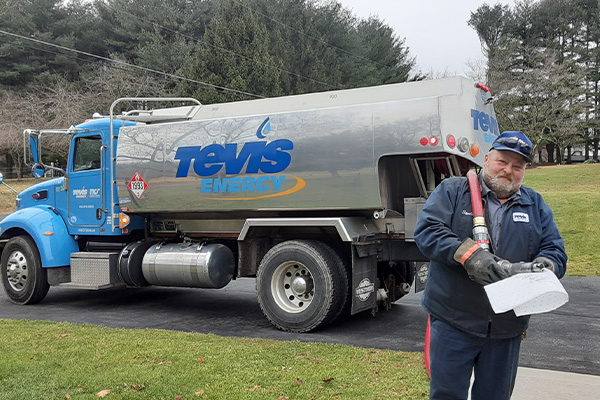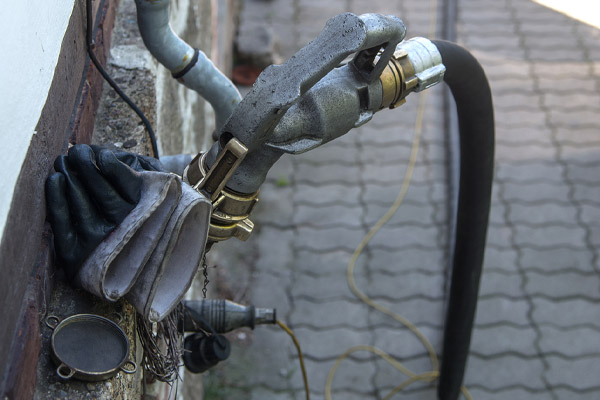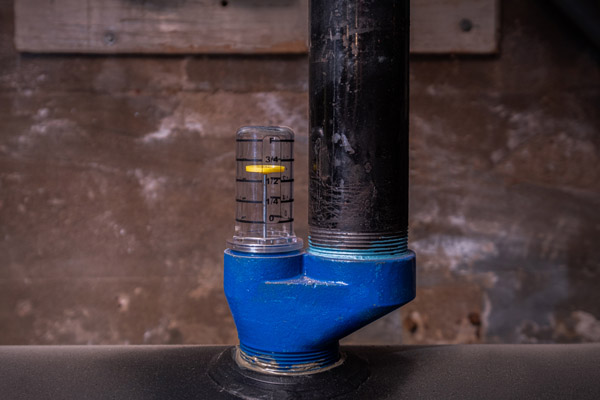If you use heating oil for home heating, a task you’ll have to perform every winter is checking your oil’s status and scheduling a heating fuel delivery with enough time. Heating oil is a crucial home element, but many homeowners still fail to maintain this essential system.
Oil tanks typically get lost in the commotion during the winter season. Many are busy with family outings, dealing with snow, and skiing trips. Unfortunately, this time of the year coincides with the coldest temperatures of the year, when having a full heating oil tank is crucial. This means that even the most responsible homeowners can run out of fuel when they need it the most.
Some of the likely reasons that lead to an empty fuel tank are failing to monitor oil tank levels, stolen fuel, a leaky tank system, and not having the funds to buy a refill.
Regardless of the cause, running out of fuel oil can be frustrating. It can significantly affect your daily activities and your family’s well-being. Preventing this from happening doesn’t have to be difficult. Understanding the risks that come with running out of fuel and taking simple measures to avoid an empty fuel tank will ensure that you have a full tank throughout the year.
Why You Should Avoid Running Out Of Heating Oil

You might think that it isn’t a big deal to have absolutely no preventative measures in place, especially if running out of oil hasn’t happened to you before. However, even the most careful homeowners might forget to order on time, which is a problem that’s more harmful than it seems.
A few critical reasons make buying oil on time an essential requirement. Aside from the lack of hot water and the inconvenience of a cold home, here are several risks that can happen if you don’t have preventative measures in place to ensure a full tank:
Additional Oil Delivery Expenses
The most common time that homeowners run out of heating oil is during the mid-end of winter. Unfortunately, this is also when heating oil prices are at their highest. Running out of fuel between October and March means you have to pay the highest oil prices of the year. This can add up to paying hundreds of dollars.
Moreover, apart from paying more for the oil itself, you also have to spend more on an emergency delivery than a regular refill. Remember that small fill-ups throughout the year have a significantly lower overall cost than an emergency service.
Oil Tank Sludge Buildup
Debris and sludge can typically be found at the bottom of heating oil tanks. They don’t necessarily damage your heating system unless it runs on an empty tank. Low oil levels mean that the sludge is pulled into the supply line with the residual oil. It might cause a blockage along the line. If it doesn’t, it goes to a filter and clogs it partially or wholly. Clogged fuel lines or filters cause reduced efficiency or the entire system shutting down, which needs to be checked by a professional.
Manual Heating Oil System Reset
After running out of fuel, resetting your heating oil system can be as simple as pressing a button at times. However, you need to reset the pilot light if it goes off. The law dictates that a professional should conduct the pilot light reset. They will first bleed the oil line and change any clogged filters, which will be a more expensive endeavor than a simple oil fill.
Ways To Prevent Running Out Of Home Heating Oil
Many risks come with running out of heating oil. Therefore, don’t wait long to ensure you are protected. Take preventive measures to keep oil in your heating tank throughout the year.
The industry-approved general rule is that your oil tank should be at least one-quarter full at all times. This doesn’t mean you need to repeatedly walk back and forth to your tank to conduct manual oil level checks. Many services and technologies are available that allow you to take preventative measures without the added time and stress of constantly monitoring your tank manually.
Automatic Heating Oil Delivery

Automatic oil delivery services mean you don’t have to worry about running out of oil ever again. The best part of this is you don’t even need to lift a finger. You don’t have to check your tank and calculate when to schedule your next refill. With an automatic delivery program, the oil company will take care of all this so you can sit back and relax.
Signing up for automatic fuel oil delivery lets your oil supplier track your oil consumption. The oil supplier uses a non-invasive technology that measures your home’s approximate heating oil consumption. Some simple information about your home and family is combined with the calculated heating degree days (HDD) or the measurement of the required amount of energy to heat your home per the outside temperature.
Your provider calculates the HDD with your home’s square footage, fuel tank size, and previous data on your heating needs. This way, they can find out with high accuracy when your tank is one-quarter full. They will then contact you directly to schedule a delivery.
Pros of Automatic Oil Delivery
The most popular delivery method for most heating oil companies is automatic delivery. It also has a high success rate in keeping fuel tanks from going empty.
- Automatic deliveries save you the most money than any other preventative option.
- Most fuel suppliers also reward clients with discounted oil rates for signing up for the service, which can significantly add up.
- The automatic delivery system uses your heating history. The deliveries are per your specific needs as well, so you won’t be sold oil you don’t need or want.
- There is no need to worry about invasive tank monitoring software as automatic deliveries use non-intrusive calculation methods.
Cons Of Automatic Heating Oil Delivery
- The system does not factor in any unexpected heat increases. For instance, your relatives might be visiting over the holidays, so more people will use a lot of hot water. You might also go on vacation and not use the usual amount of heat. Therefore, you have to let your oil provider know so they can make adjustments to your delivery schedule.
- You will likely need to commit with a single oil supplier for a certain period to get the most accurate results. Hence, you can’t shop around for various prices throughout the year.
Tank Monitoring Applications & Smart Oil Tank Meters

Smart technology has been incorporated in almost all industries. All parts of your home have technologically advanced options, such as cookware, garbage bins, smart security systems, and thermostats. This technology has also introduced smart oil tank meters, which have changed the heating oil industry.
This device allows you to monitor your home’s oil levels, heating costs, and consumption via smart software. You can do this remotely as the tracking method will send the data to your computer or home through a sensor that’s attached to your oil tank.
Pros Of Oil Tank Smart Meters
- Professional installation is needed to put the sensor on your tank. Once it is done, you can track your oil consumption within minutes. Talk to Tevis Energy today about a smart meter installation.
- Many systems have built-in alarms, so you’ll know when there is potential oil theft.
- Most smart systems notify you as soon as you have low oil levels so that you have time to schedule your next oil fill-up with your supplier.
Cons Of Smart Meters
- It is one of the most expensive oil tracking options on the market. The typical cost of a smart tank monitoring system is around $100 or more.
- Media outlets have reported errors from the smart monitoring software, with some rare cases having as much as 50% inaccuracy in electricity monitoring systems. It should be noted that most smart oil monitoring software users find the system accurate, but rare inaccuracies should be accounted for and checked.
- Most smart meters only notify the homeowner and not the supplier of low oil levels. Therefore, you need to call your oil provider immediately to keep you from running out of oil.
Local Heating Oil Tank Monitors

If you want to check your tank levels from the comfort of your home but you do not have a smartphone or any device to connect with a smart meter, an ideal alternative is local tank monitoring software. Much like smart meters, local tank monitors have a transmitter that can be easily attached to your oil tank. This sensor sends a local readout to a monitor that’s usually plugged into an electrical socket in your home.
Pros Of Local Fuel Oil Tank Monitors
- Most monitors have a fast installation process. Just place the sensor in the tank and plug the monitor into an outlet. If you do not use a smartphone, you can still enjoy the benefits of a tank readout system with ease.
- The system will alert you via the monitor when there is a low oil supply. This way, you will know for sure when to call your oil provider.
- Local tank monitors have a higher accuracy rate than standard mechanical float gauges. They can also eliminate the need for dipsticks or gauges.
Cons Of Local Tank Monitors
- Some monitors can be placed anywhere in your home. However, many need to be installed within a certain distance from the tank, so there is less freedom than automatic delivery services or smart meters. Batteries can power some mobile monitors so they can be taken throughout the home. However, most local tank monitors need to be plugged into an electrical outlet, so they lack mobility.
- Tank transmitters and monitoring systems can cost almost as much as smart monitoring software. You will likely shell out around $100 on a local tank monitor, like with smart meters.
- The system usually sends an alert when your tank’s fuel supply is low. However, you still need to call your oil provider for a refill.
Oil Tank Alert Systems

If you are looking for a system that will notify you of a low oil supply without bells and whistles like that in smart or local monitoring systems, go for an oil tank alert system instead.
An alert system won’t require you to pay for any additional data or settings. You simply install a gauge onto the oil tank, which will alert a receiver when you have low oil levels. The receiver will either beep or flash when oil levels reach a specific amount so that you can call your oil supplier.
Pros Of Fuel Alert Systems
- If you are unfamiliar with smart technology, alert systems are the ideal monitoring option for you. Its receiver, a simple device without a screen or a complex user interface, will alert you whenever the oil levels are low without any unnecessary information.
- Alert systems are simple machines, making them a relatively inexpensive option compared to other tank monitoring software. Therefore, a unit can be bought at a cheap cost.
- Many receivers are battery-operated, so they can be placed anywhere throughout your home.
Cons Of Alert Systems
- Alarm systems will only notify you of low oil levels. It will not give you any essential data about your oil consumption. Knowing your daily and seasonal trends can point to where you might be wasting money and what you can do to reduce your heating bills. However, alert systems don’t track this vital information.
- These systems won’t alert your oil provider of low oil levels, like other kinds of tank monitoring. You still have to make a last-minute call to ensure your tank doesn’t go empty.
Manually Checking Heating Oil Tank Levels

If your budget keeps you from buying a monitoring system or signing up for automatic oil delivery service, you need to manually check your oil tank to prevent running out. Experts discourage self-monitoring your tank levels. However, it can be done as a last resort. You can evaluate the gauge and contact your oil provider when you see that you have low oil levels.
You can use a dipstick to find out how full your tank is. Make sure to call your oil provider for a refill before the tank is at one-quarter full. Ensuring that your oil level doesn’t go below the one-fourth mark means you won’t run out of fuel or cause damage to your tank.
Pros Of Manual Oil Monitoring
Manual checking your tank might seem like the most cost-effective option. However, you might end up spending more over time, especially if you forget to monitor your oil levels throughout the year.
Cons Of Manual Oil Monitoring
- Even highly responsible homeowners might forget about their heating oil, especially since the winter season can be a busy time. While most prevention methods alert you when oil levels are low, manual monitoring relies on you to check your own oil levels often. Failure to check your tank could result in an emergency fill-up and costly repairs.
- This monitoring method is the most inconvenient, especially if you have an outdoor tank. After all, you wouldn’t want to stand outside the wind or snow to check your oil tank during the coldest days of the year.
What You Should Do If You Run Out Of Heating Oil
Preventive measures cannot help you fill your empty tank once it has already run out of home heating oil. These steps should be taken to avoid problems that come with an empty tank in the future. However, you need to act immediately to ensure your home’s heating returns.
These are a few tips to help you on what to do if your tank runs out of heating oil:
- Order Emergency Oil Delivery Service: Emergency fuel delivery services fill up your tank in less than 24 hours of your order.
- Use A Substitute To Heat Your Home: If your heating oil tank runs out, you can use diesel fuel or kerosene to hold you over until the emergency delivery arrives. Fill a gasoline-safe container with around 5-10 gallons of fuel at a nearby gas station. You can also opt to use a fireplace or space heaters to provide heat in your home until you receive more fuel.
- Insulate Your Surroundings: Ensure that the excess heat stays in your home while you wait for the oil delivery. Tightly close all doors and windows and insulate with weather stripping when possible. Wear layers and consume warm food/beverages. This way, heat loss is minimized.
Call Tevis Energy For Your Home Heating Oil Requirements

Tevis Energy is a trustworthy heating oil delivery company that services central Maryland and southern Pennsylvania. Our company offers affordable and the most competitive heating oil prices in the area. Our goal is to provide you with excellent products and services. When you choose us to be your oil supplier, you can rest easy knowing that you will have correct and prompt heating oil deliveries at the best possible prices. Furthermore, we offer various heating oil delivery plans and financing options, as a way to customize your oil deliveries. Be sure to call us today to learn more.
Tevis Energy has certified and highly trained HVAC technicians to cater to all your heating and cooling needs. We guarantee that each of our techs has the experience, skills, and knowledge to provide excellent HVAC services. Our team can assist you with installations, repairs, maintenance, and much more. Our superior HVAC solutions always come at affordable costs and we back all of our work with a guarantee.
Call us today to learn more about the products and services our company offers. We provide free, in-home estimates.
You can click here to contact us now or call us at (410) 876-6800 to find out more!
